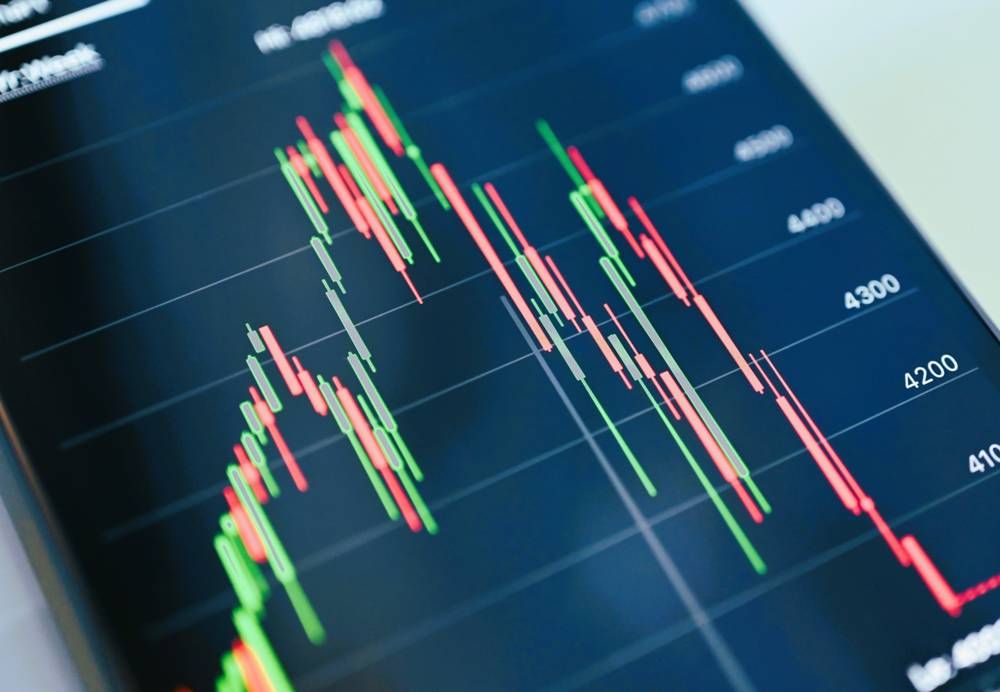A complete guide to the S&P 500

Find out everything you need to know about the S&P 500 index, from its price history to the key factors that drive its value, as well as how to trade the market with CFDs.
What is the S&P 500?
The S&P 500, traded as the US 500 on Capital.com using CFDs and officially known as the Standard & Poor's 500 Index, is a stock market index featuring the largest blue-chip stocks listed on American exchanges. Representing some of the most well-known companies globally, it’s one of the most commonly followed indices. The index comprises 500 companies across a broad range of sectors from oil to technology through to healthcare, consumer goods and beyond.
The constitution of the S&P 500 is determined by market capitalisation, with the leading stocks at the top of the index. Due to a weighting system, price movement among the top stocks can disproportionately impact the index price compared to stocks lower in the index.
Like other major indices such as the Dow Jones Industrial Average, the S&P 500 is routinely used as a gauge for the overall health and performance of the domestic stock market and economy.
What is the S&P 500 price history?
The S&P 500 was established in 1957 by financial services company Standard & Poor's with the intention of creating a more comprehensive representation of the US stock market compared to the Dow Jones Industrial Average, which includes only 30 companies. As such, the S&P 500 includes 500 of the largest companies listed on stock exchanges in the US, covering a wide range of industries and sectors.
The early days of the S&P 500
The history of the index is marked by a wide range of macroeconomic events that moved its price. In the 1960s, the post-World War II economic expansion and technological advancements boosted the index performance, and the 1980s saw a dramatic bull market, fuelled by economic policies under President Ronald Reagan, such as tax cuts and deregulation. This period of growth was punctuated by the infamous Black Monday on 19 October 1987, when the S&P 500 plummeted by over 20% in a single day due to widespread panic selling.
In the 1990s, a rapid growth in technology and internet-related stocks – known as the dot-com boom – launched the index to unprecedented heights. However, the bursting of the bubble in 2000 caused a significant drop as key tech stocks fell in value. In 2001, the impact of the 11 September attacks was devastating on the index price as markets reacted to the uncertainty and economic disruption that followed.
Another landmark year for volatility was 2008, when US subprime mortgages were the catalyst for the collapse of major financial institutions. As a result, the index lost nearly half of its value from its peak in 2007 to its trough in 2009. And it was the US government's intervention through bailouts and economic stimulus measures that helped stabilise the market, leading to a recovery that marked the beginning of one of the longest bull markets in history.
The S&P 500 in modern times
In recent years, the S&P 500 has been influenced by various factors, including geopolitical events, trade tensions, and monetary policy decisions by the Federal Reserve. The Covid-19 pandemic in 2020 caused a sharp but brief recession, with the index experiencing one of its fastest declines in history, followed by a rapid recovery due to unprecedented fiscal and monetary support. In more recent times, the index price has steadily increased further, leading some commentators to speculate when a correction might occur.
Throughout its history, the S&P 500 has remained a barometer of the US economy’s health, reflecting the resilience and adaptability of American businesses. Its movements continue to be closely watched by investors, policymakers, and analysts worldwide, making it a crucial tool for understanding market trends and economic conditions.
To better understand current market sentiment, check our Fear and Greed Index guide.
What factors might affect the performance of the S&P 500?
The performance of the S&P 500 is beholden to a range of critical macroeconomic events that should be understood for an effective understanding of this market. Here are the main ones:
- Economic indicators: Stats like GDP growth, interest rates, unemployment figures, inflation, retail sales and consumer confidence are all capable of moving the index as they are important drivers of investor sentiment. It’s worth following all such data points for a complete economic picture. Check out our Week Ahead newsletter, released on Mondays, for a snapshot, and explore our market analysis for a more in-depth focus on the fundamental and technical drivers of assets.
- Corporate earnings: The financial health and profitability of the companies within the S&P 500 can be observed by following earnings reports. Earnings that exceed or miss analyst expectations have often had an impact on price, both in regards to the individual stocks and the indices of which they are a part. Stats to zone in on include net income, revenue, earnings per share and other metrics that give clues on future company prospects.
- Federal Reserve policies: In the event the Federal Reserve changes interest rates and introduces quantitative easing measures, there may be an impact on stock and index prices. For example, lower rates may boost stock prices by reducing borrowing costs and encouraging investment, whereas rate hikes can have the opposite effect.
- Global events: International developments such as geopolitical tensions, trade disputes, and economic conditions in major global markets can influence the S&P 500; events like Brexit, the US-China trade war, and the Covid-19 pandemic have demonstrated the index’s sensitivity to global news.
- Market sentiment: Investor confidence and market sentiment, often driven by news, rumours, and trends, can cause short-term volatility in the S&P 500. Factors like political elections, technological innovations, and changes in consumer behaviour can lead to rapid shifts in market perception and trading psychology, sometimes in counterintuitive ways.
- Government policies: Fiscal policies, including government spending, taxation, and regulatory changes, can affect the economic environment and corporate profitability, thereby impacting the S&P 500; significant legislation and infrastructure projects are examples of government actions that can move the market.
What companies are in the S&P 500?
The S&P 500 contains some world-renowned businesses at the top of their sector, such as tech giants Apple, Meta and Alphabet, microchip leader Nvidia, and electric vehicle luminary Tesla. Banking leaders JPMorgan and Bank of America also feature relatively high in the list.
What are the S&P 500 stock market hours?
The S&P 500 stock market hours are based on the hours of the New York Stock Exchange and the Nasdaq Stock Market, which operates its regular trading session from 9:30am to 4:00pm local time, or 2:30pm to 9:00pm UTC.
Learn more about stock market trading hours for a full understanding of trading sessions and timings.
If you choose to trade CFDs, you can follow the S&P 500 performance live with the comprehensive S&P 500 price chart.
How to trade the S&P 500 with CFDs
If you want to take a position on the S&P 500, you have a choice of methods. First, you can trade a derivative product such as a contract for difference (CFD) on the stock market price using leverage. A CFD is a financial contract, typically between a broker and a trader, where one party agrees to pay the other the difference in the value of a security between the opening and closing of the trade.
Using a CFD, you can either hold a long position (speculating that the S&P 500 price will rise) or a short position (speculating that it will fall). This is considered a short-term investment or trade, as CFDs tend to be used within shorter timeframes.
CFDs are traded on margin, which means that a trader can get exposure to larger positions with a relatively small outlay. This amplifies the potential profits, but also the potential losses, making such trading risky.
You can learn how to trade indices in our comprehensive guide to indices trading.
Aside from CFDs, you can also trade the S&P 500 through instruments like options, ETFs, and mutual funds. Options allow for speculative investment with controlled risk, ETFs enable straightforward stock-like trading of the index, and mutual funds offer a managed, buy-and-hold approach to tracking its performance. Each offers an alternative to the leveraged trading of CFDs, catering to different risk management approaches and investment strategies.
To trade share CFDs with us, just sign up for a Capital.com account, and once you’re verified, you can use our advanced web platform or download our intuitive yet easy-to-use app. It’ll take just a few minutes to get started and access the world’s most-traded markets.
Why trade index CFDs with Capital.com?
Trading index CFDs with Capital.com means you’ll enjoy an intuitive, easy-to-use platform, 24/7 support, fair and transparent pricing, along with award-winning education to help build your experience in the markets.* You can seamlessly integrate our smart platform with elite third-party software TradingView and MT4, and refine your strategies with our risk-free demo.
*Awarded best-in-class for education at ForexBrokers.com’s 2024 Annual Awards
FAQS
What is the US 500?
The US 500 is the name of our tradeable CFD market on the S&P 500 index. The US 500 price you see with us tracks the price of the underlying S&P 500, enabling you to take a long or short position on the index.
Why is the S&P 500 important to traders?
The S&P 500 is considered a leading stock index due to its representation of the performance of America’s largest and most recognisable companies. This means the index performance is scrutinised by financial commentators and traders worldwide, who look out for fundamental events such as interest-rate decisions and GDP for clues on how the market may move next.
What affects S&P 500 prices?
The S&P 500, which represents 500 of America’s most high-profile listed companies, is influenced by various factors like economic data, global economic conditions, sector-specific changes, and successes or failures of the largest, most influential stocks in the index.
Visit our other complete guides

How to trade UK 100

How to trade the Australia 200
